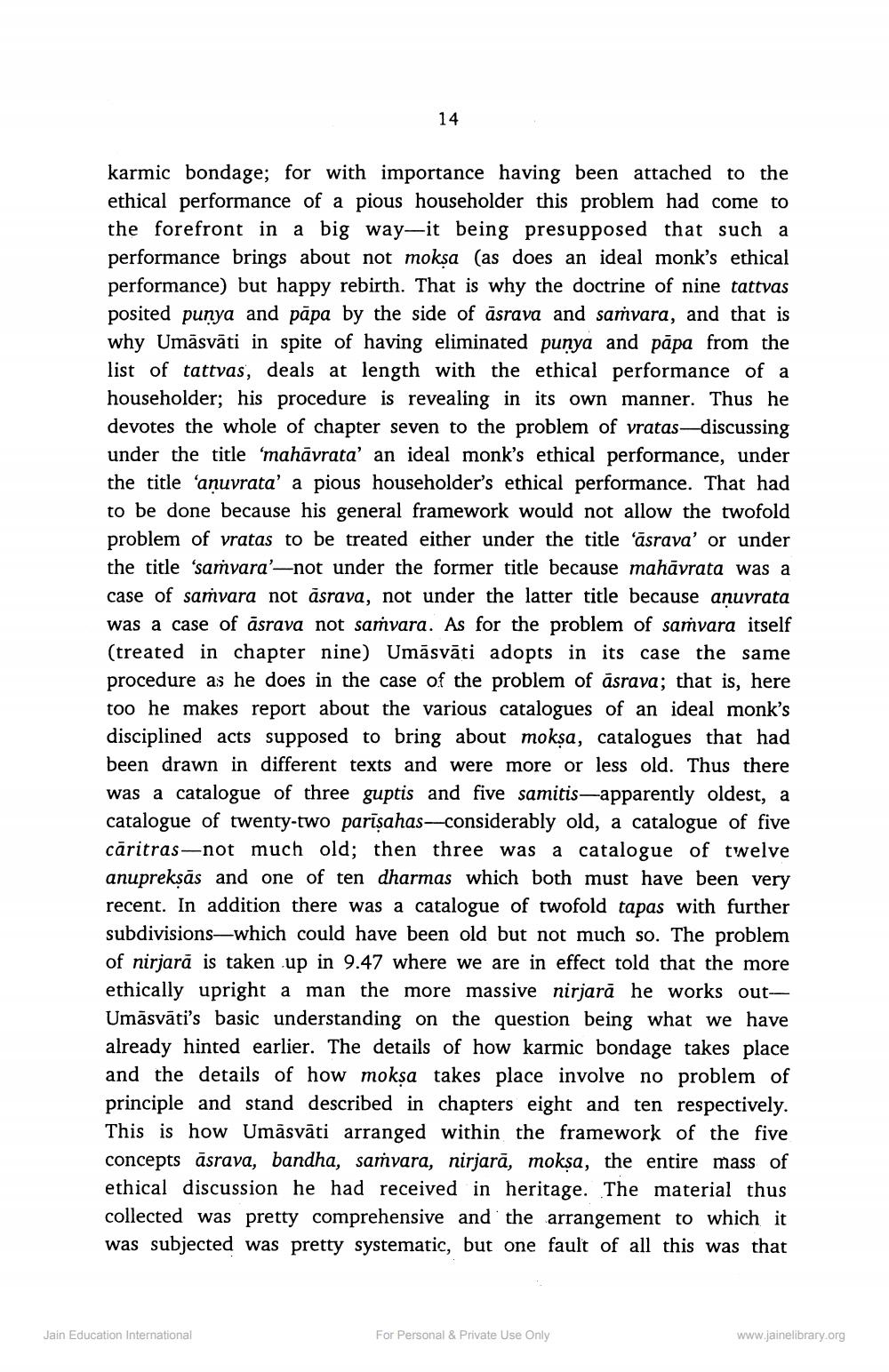________________
14
karmic bondage; for with importance having been attached to the ethical performance of a pious householder this problem had come to the forefront in a big way-it being presupposed that such a performance brings about not moksa (as does an ideal monk's ethical performance) but happy rebirth. That is why the doctrine of nine tattvas posited punya and pāpa by the side of asrava and samvara, and that is why Umāsvāti in spite of having eliminated punya and pāpa from the list of tattvas, deals at length with the ethical performance of a householder; his procedure is revealing in its own manner. Thus he devotes the whole of chapter seven to the problem of vratas-discussing under the title 'mahāvrata' an ideal monk's ethical performance, under the title 'anuvrata' a pious householder's ethical performance. That had to be done because his general framework would not allow the twofold problem of vratas to be treated either under the title 'asrava' or under the title 'samvara'-not under the former title because mahāvrata was a case of saṁvara not asrava, not under the latter title because anuvrata was a case of asrava not samvara. As for the problem of samvara itself (treated in chapter nine) Umāsvāti adopts in its case the same procedure as he does in the case of the problem of asrava; that is, here too he makes report about the various catalogues of an ideal monk's disciplined acts supposed to bring about mokşa, catalogues that had been drawn in different texts and were more or less old. Thus there was a catalogue of three guptis and five samitis-apparently oldest, a catalogue of twenty-two parīşahas-considerably old, a catalogue of five cāritras-not much old; then three was a catalogue of twelve anupreksās and one of ten dharmas which both must have been very recent. In addition there was a catalogue of twofold tapas with further subdivisions—which could have been old but not much so. The problem of nirjarā is taken up in 9.47 where we are in effect told that the more ethically upright a man the more massive nirjarā he works outUmāsvāti's basic understanding on the question being what we have already hinted earlier. The details of how karmic bondage takes place and the details of how moksa takes place involve no problem of principle and stand described in chapters eight and ten respectively. This is how Umāsvāti arranged within the framework of the five concepts asrava, bandha, saṁvara, nirjarā, mokşa, the entire mass of ethical discussion he had received in heritage. The material thus collected was pretty comprehensive and the arrangement to which it was subjected was pretty systematic, but one fault of all this was that
Jain Education International
For Personal & Private Use Only
www.jainelibrary.org




